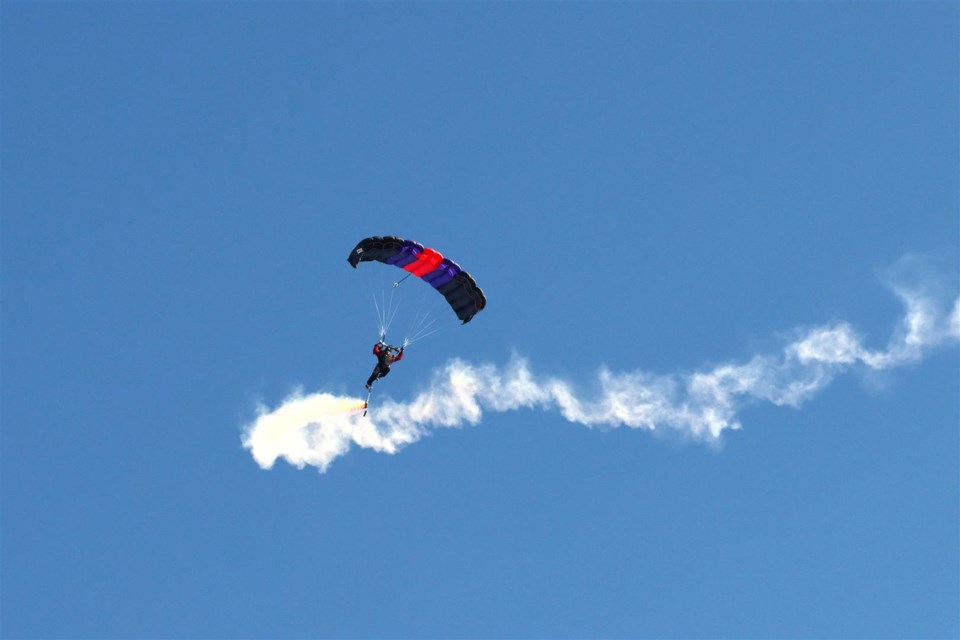Skydive South Sask has been in operation nearly 42 years. They are a group of enthusiasts who are in the sport for life. Many of the “lifers,” as they call themselves, have logged thousands and thousands of jumps – not just in Moose Jaw, but globally.
Large skydiving events are referred to as “boogies.” They can be held anywhere, and the organizers are thoroughly networked – they seem to know everyone even remotely involved with skydiving. Jumpers, pilots, and planes are sourced and invited from all over the world. Boogies can be competitive in some cases, but competition never takes priority over enjoyment.
Burk Reiman, one of Skydive South Sask’s Chief Instructors, describes one particularly memorable experience at a boogie while on vacation in Thailand. His eyes light up as he describes jumping from a C-130 Hercules with hundreds of other skydivers as part of the Thai king’s 60th-anniversary celebrations. They jumped dozens of times with the full support of the Royal Thai Air Force, attempting to set the world record for the largest skydiving formation.
While such opportunities create unique memories, accumulating jumps does not need to be so exotic. During Canada’s six-month jumping season, Burk and the other instructors at Skydive South Sask thoroughly enjoy their dropzone at Moose Jaw Municipal Airport (MJMA). They have 600-800 students and tourists every year.
Burk says they see all kinds of people, from those who just want to try the sport, to those who, as he says, “have that little bit of a personality difference,” that causes them to fall in love with jumping out of a plane. It’s counter-intuitive, but Skydive South Sask instructors are even familiar with prospective jumpers who have a fear of heights.
“It’s not like the Bugs Bunny, Roadrunner cartoons where the world is rushing by you,” Burk explains. The perspective doesn’t actually change, he says, until you get closer to the ground, under the chute, so the initial jump is not as scary as many people anticipate.
Skydive South Sask adheres strictly to Transport Canada regulations, including absolutely no substance consumption before jumping, a certain minimum level of physical fitness, and mandatory doctor’s notes for those over 65 or for those who have medical conditions. Because skydivers are required to navigate visually and the airspace can be busy, there is also a firm rule against jumping through clouds.
Who flies the plane? It’s no problem getting pilots, Reiman says, in addition to the several pilots they count among the club membership. Pilots are always looking for a way to log as many flight hours as possible, so they are eager to come out. They’ve had everyone fly for them, from Snowbirds to pilots who are working toward a commercial license, who go on to fly for major airlines.
The club owns a Cessna 182 which can carry four jumpers at a time, and there are no fancy maneuvers involved. Take off; reach the drop height; fly straight and level while the jumpers exit; land the plane. Relatively boring – which is good, because if you’re trying skydiving, you probably aren’t looking for any other source of excitement that day.
Skydive South Sask is a non-profit skydiving club, one of only a few in North America. Running a non-profit has its challenges, but it also enables them to keep the focus on enjoying the sport. The other benefit is that their prices are low in comparison with a for-profit business.
The season is over for this year, but if skydiving is something you’d like to try, keep an eye on their website at www.skydivesouthsask.ca, and get in touch as spring approaches!




